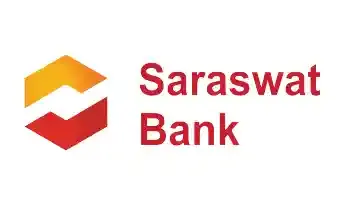Get instant loan offer suitable to your profile !


On this Page:
Learn all about MCLR in education loans, how it affects your interest rate, and what students need to know when applying for an education loan in India
School loans can be rather confusing; add terminologies like MCLR, and that's even more perplexing. If you have ever wondered, "What is MCLR in an education loan?" or found your way here, then you're at the right place. Ever since the RBI adopted it in 2016, MCLR has significantly transformed the way interest rates are determined by banks, which has encouraged better openness and efficacy.
In simple terms, this blog aims to simplify MCLR by highlighting the effect it has on the interest rate of student loans and what it means for the borrower who shifts from Base Rate to MCLR. We are here to inform you better on how MCLR affects your education loan, so you can take informed decisions about your financial future.

The MCLR is a benchmark rate used by banks to establish interest rates on loans, especially education loans. The Reserve Bank of India (RBI) introduced the MCLR in April 2016 to replace the Base Rate mechanism, increasing transparency and efficiency in interest rate setting. The computation of the MCLR incorporates many crucial components:




Read More About: Understanding External Benchmark Rate (EBR) in Education Loan

Comparing MCLR with other rates like the Base Rate and Repo Linked Lending Rate (RLLR) highlights its advantages:



MCLR comes with its set of benefits and challenges for borrowers. Some of them are shown in the table below:
| Pros | Cons |
|---|---|
|
Transparency: MCLR ensures that borrowers benefit from a transparent rate-setting process. |
Rate volatility: Borrowers might face uncertainty due to potential fluctuations in their loan's interest rate and EMI amounts over time. |
|
Potential for lower rates: As MCLR is influenced by multiple factors, including the RBI's policy rates, borrowers could benefit from lower interest rates in a declining rate scenario. |
Complexity: Understanding how MCLR is calculated and its impact on loans can be complex for some borrowers. |
|
Responsive to economic changes: MCLR adjusts more quickly to economic conditions, potentially leading to more favorable loan terms in response to changes in the financial environment. |
Reset period uncertainty: The reset period of MCLR-linked loans can introduce unpredictability in financial planning for borrowers, as interest rates are subject to change at the time of reset. |

For borrowers with loans linked to the Base Rate, understanding "what is MCLR in education loan?" could offer the possibility of benefiting from lower rates. Here's what to consider:



Banks determine the Marginal Cost of Funds Based Lending Rate (MCLR) for loans by considering the following factors:





The future landscape of MCLR and its impact on education loans is anticipated to alter in response to economic situations, RBI regulations, and banking practices. Borrowers should be advised about:


In conclusion, the MCLR plays an important role in calculating interest rates on student loans, providing benefits such as transparency and potentially cheaper rates. To properly manage their loans, borrowers must negotiate its complexity and remain up to date on changes. Understanding MCLR and its ramifications can help students and families make better financial decisions about their school funding.
For those looking to explore further or need personalized guidance, GyanDhan is here to assist. Leverage GyanDhan's expertise by checking your eligibility with us, to navigate your education loan options seamlessly and make the most informed choices for your future.

There are certain ways by which you can use MCLR to your advantage. Here are some of the ways:




To better understand MCLR's impact on repayment, let us take a look at the following table wherein the monthly EMI for an INR 15 lakh loan with a 15-year term under different MCLR rates, including a 0.5% increase and decrease from the base rate of 8.5%
| Scenario | Effective Interest Rate (%) | Monthly EMI |
|---|---|---|
|
Base MCLR |
8.5 |
INR 14,771 |
|
+0.5% MCLR |
9 |
INR 15,214 |
|
-0.5% MCLR |
8 |
INR 14,335 |

The Marginal Cost of Funds Lending Rate (MCLR) will directly impact your repayment amount as follows:
Lower MCLR: A lower MCLR means lower interest rates and results in lower EMIs.
Higher MCLR: A higher MCLR means higher interest rates and results in higher EMIs.
MCLR directly impacts the interest rate. Higher MCLR results in higher interest and lower MCLR results in lower interest.
The Marginal Cost of Funds Based Lending Rate (MCLR) for an education loan may change every six or twelve months. It depends on the bank and loan agreement.
Yes, you can negotiate the spread over the Marginal Cost of Funds Lending Rate (MCLR) with your bank for an education loan.
Check Your Education Loan Eligibility

Ask from a community of 10K+ peers, alumni and experts
Trending Blogs
Similar Blogs

Network with a community of curious students, just like you
Join our community to make connections, find answers and future roommates.. Join our CommunityCountry-Wise Loans
Best Lenders for Education Loan

ICICI Bank

Axis Bank

Union Bank

Prodigy

Auxilo

Credila

IDFC

InCred

MPower

Avanse

SBI

BOB

Poonawalla

Saraswat